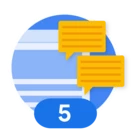Recently I reviewed an article covering an attack path that an actor took in a Google Workspace/GCP environment.
https://www.bitdefender.com/blog/businessinsights/the-chain-reaction-new-methods-for-extending-local-breaches-in-google-workspace/
When going over the TTPs one mentioned as "Golden Image Lateral Movement" stood out. The technique boils down to local accounts containing the same credentials on a VM if that VM gets cloned. Assuming an organization has ample GCP logs (Like GCP Cloud Audit) is there a detection that can see this behavior?
The FP rate will likely be high when looking for all clones however different orgs could modify the rule to bump out known procedures for cloning VMs.
Detection Request Around Golden Image Lateral Movement in GCP
 +3
+3Enter your E-mail address. We'll send you an e-mail with instructions to reset your password.


